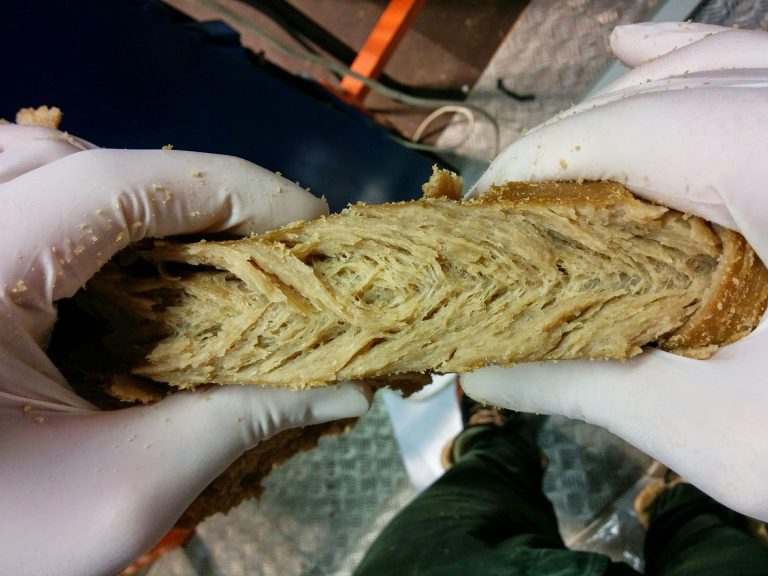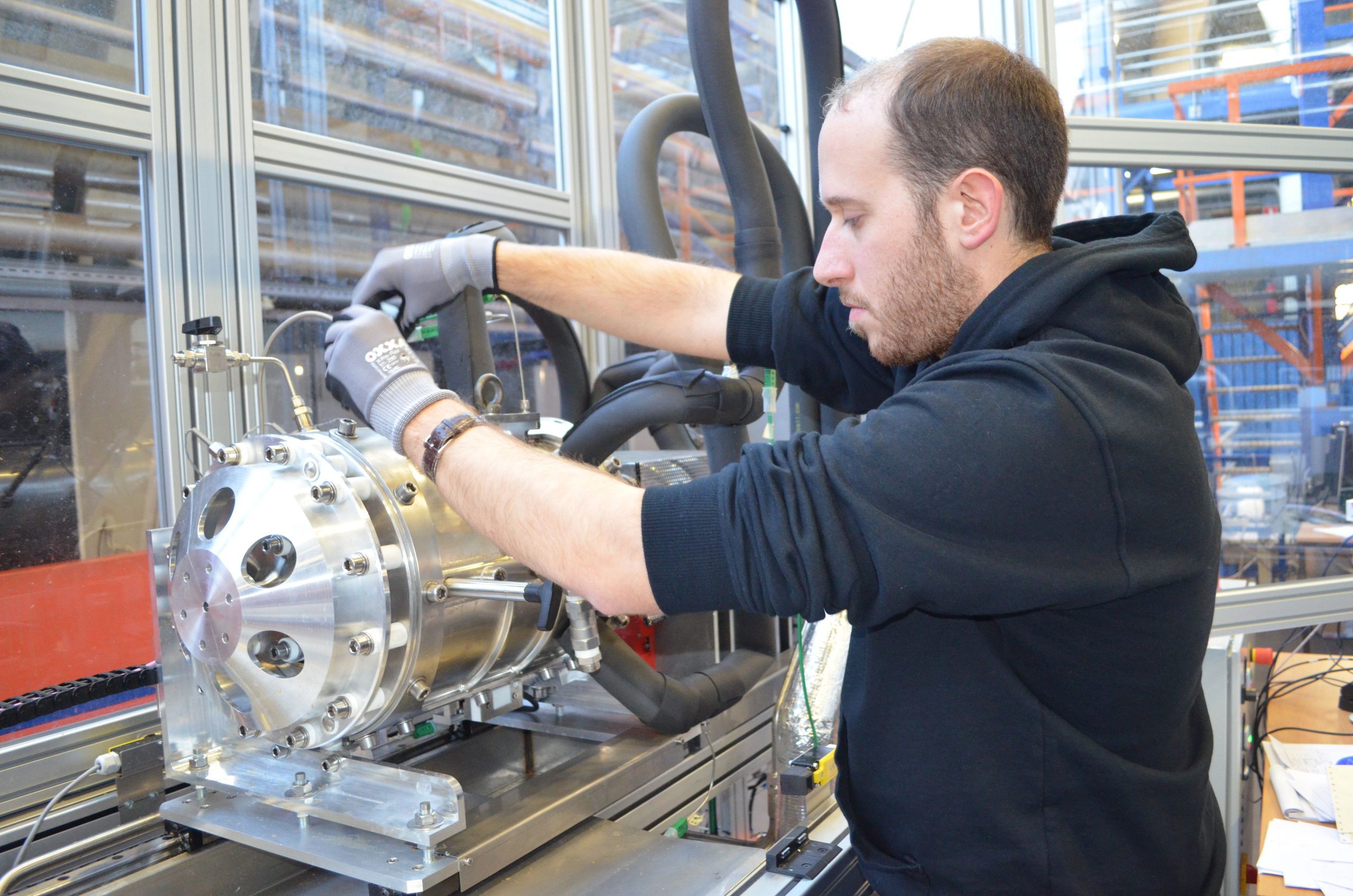A meat replacer, based on soybeans, that is just as good as steak. TU Delft researcher Georgios Krintiras believes the “beef” machine he worked on can produce just that.
When it comes to taste you can easily fool yourself. “Creating the right mouth-feel is the key trick to produce a vegetarian steak that tastes like real meat,” said Georgios Krintiras, who is a PhD candidate in the department process and energy at the Mechanical, Maritime and Materials Engineering faculty (3mE).
For the past few years, the Delft researcher has been working on a machine that turns a mixture of soybean protein and gluten into a steak with the right fibre structure. Earlier this month colleagues of Krintiras from the Wageningen University, with whom the Delft researcher collaborates, presented the prototype to the press.
With this device, one can mimic meat-like structures from soy proteins, in a piece of a few kilogrammes with a thickness of about three centimetres.
That makes for a lot of big steaks, you would think. But that is deceptive. “The fibres are laid down in the longitudinal direction. When you look at a real steak, you will notice that the fibres all face towards you. Butchers cut meat almost perpendicular – slightly diagonally – to the direction of the fibres. If you do the same with our vegetarian meat, you end up with fillet-type steak pieces. Therefore, in the future we need to further scale up the device to make even thicker pieces of meat.”
With the developed method, the so-called Couette Cell Technology, the soy mixture is turned around and sheared in a cylindrical shaped container, a double walled sleeve. It is also heated to about a hundred degrees Celsius by heating elements positioned in the middle of the cylinder and on the exterior. This motion and heating cause the vegetable proteins to take on a fibre structure. The process takes about half an hour.
“The product makes animal ingredients, such as egg or whey, unnecessary, which is a big environmental advantage,” said Krintiras. “The thickness that we achieve is twice of which is being obtained today with conventional vegetable texturizing methods. Those use a technique called extrusion cooking in which the vegetable mixture is first being intensively mixed and later structured. The Couette Cell Technology is at least ten times more energy efficient. Producing a kilogramme of meat costs us between 18.5 and 32.6 kJ. Values from extrusion cooking vary between about 200 and 1200 kJ per kilogramme.”
Though the researcher believes the machine is promising, scaling it up will be quite challenging. “To make thicker meat we will have to use higher temperatures. Otherwise, the steak will not be cooked all the way through. But we have to do so without burning the meat on the outside. It would also be better if the production process could be continual instead of a batch process that it is now.”
Krintiras is not going to pursue these quests. He has almost finished his PhD research, which he will defend early next year.
The work on the steak machine was a public-private collaboration funded by the Institute for Sustainable Process Technology, the Peas Foundation, TU Delft and Wageningen University. According to Niko Koffeman of the Peas Foundation, three million euro is needed to make a second, larger prototype. “Many investors have shown interest”, he said. He thinks it will take between two and five years until the steaks will be in supermarkets.
During his research Krintiras also experimented with printed meat. “As part of the Augmented Prototyping Course at Industrial Design and under the supervision of Dr. Jouke Verlinden we assembled a team of five enthusiastic interdisciplinary Bachelor students. The goal was within four weeks to develop a prototype 3D ‘meat’ printer for the production of a chicken breast-like meat replacer.”
“After obtaining a 3D chicken breast model we defined the desired fibre thickness for our meat replacer,” the researcher explained. “We used a syringe as a cartridge to deposit the plant-based mixture. The printer head followed a predetermined path to deposit the mixture and at regular iterations we sprayed a salt-water solution to solidify the fibrous structures. After several deposition steps, we obtained the desired chicken breast-like product.”
The taste is not perfect yet. Krintiras thinks that this can be solved by adding flavours. He foresees a future in which people have their own meat printer in their kitchen and print some chicken or steak for supper. “Couette Cell Technology, on the other hand, would be more interesting for slightly larger scales. I would imagine butchers to all have such machines.”





Comments are closed.